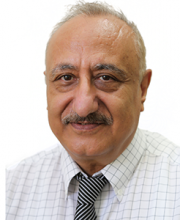You are here
Jordan’s energy impasse
Feb 17,2019 - Last updated at Feb 17,2019
The astonishing success which Jordan has achieved since the endorsement of the Renewable Energy and Energy Conservation Law No. 13 of 2012 and the successive instructions that followed allowed the Kingdom, by the end of 2017, to produce 7 per cent of its electricity through renewable energy, solar and wind mainly, rising sharply from almost nothing in 2014 to 0.7 per cent in 2015 and 4 per cent in 2016. This achievement has placed Jordan third at a global level in terms of the amount of investment in renewable energy resources compared with its GDP.
At the Arab level, Jordan can be ranked second after Morocco, which is aspiring to reach 42 per cent renewable electricity by 2022. In Marrakech, during the 2016 United Nations Climate Change Conference, 48 developing nations committed to reaching a 100 per cent renewable energy share between 2030-2050, a target that is far beyond Jordan’s aspirations.
What is also interesting to know is that the impetus of renewable energy production in Jordan is persistent until achieving 20 per cent of renewable energy for electricity production by 2022, after which a stalemate is expected, since other sources of energy are also designated within the energy mix to satisfy the alleged need to diversify energy sources. This approach has already been activated by temporarily halting new renewable energy projects until a long-term strategy is established.
Since 2007, the diversity in the energy mix was designed hastily and used as an excuse to legitimise the nuclear power share, and later on gas imports from the Leviathan gas fields in the Mediterranean; a 15-year-long deal that is still obscure both to the public and to its representatives in Parliament.
Adversely, the huge oil shale deposit which Jordan enjoys was also limited in the energy strategy to 14-15 per cent of the energy mix, although expanding production of electricity from oil shale can be sustainable, provide job and social stability and serve as a catalyst for controlling electricity tariff fluctuations on the long term. The affordability of energy prices is one of the main pillars of the Sustainable Development Goals which were signed at the 1992 Rio summit and agreed upon in Paris in 2015 for action by 2030.
Hitherto, we wonder if this strategy of limiting the renewable energy source share is unique to Jordan or if it is a common practice worldwide. The following examples introduce energy policies in some countries, where renewable energy share in electricity production has already exceeded 50 per cent: Brazil has already achieved 80 per cent of renewables, New Zealand 65 per cent, Sweden 50 per cent at present and aspires for 100 per cent by 2050, Scotland’s share is already 70 per cent and aiming at 100 per cent by 2020. Other countries which aim at reaching 100 per cent of renewable energy share in electricity production are Nicaragua, Portugal, Spain, Denmark and others.
We believe, therefore, that a 20-per cent renewable share in electricity production for Jordan is too little for a country that lies on the world’s solar belt, enjoying an average of 330 sunny days annually and a daily average of solar intensity (irradiance) of 5-7 kilowatt hours per square metres, whereas countries with solar intensity of 30 to 50 per cent of that of Jordan are seeking far more than the Kingdom’s aspiration.
The writer is an energy and green buildings consultant. He contributed this article to The Jordan Times. [email protected]













